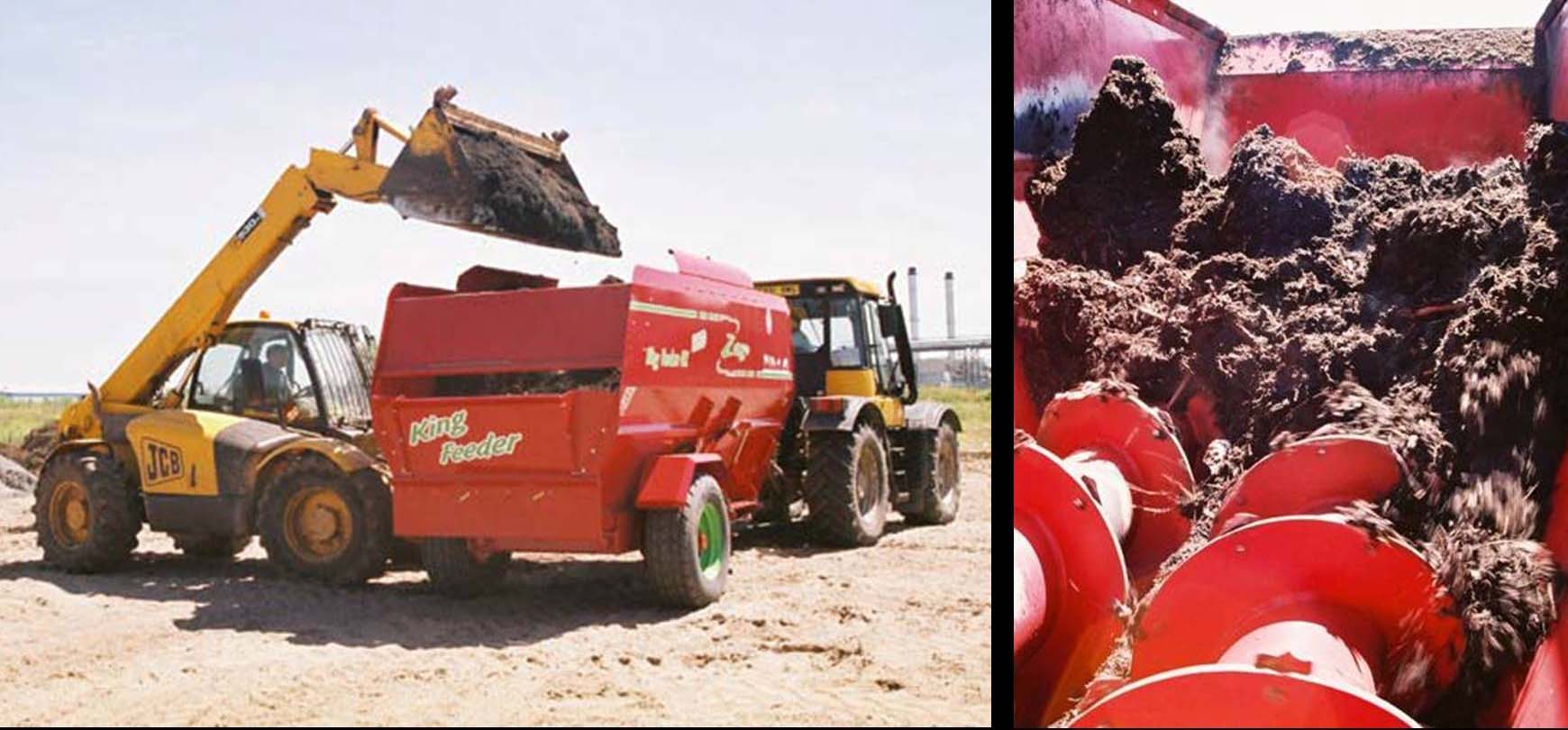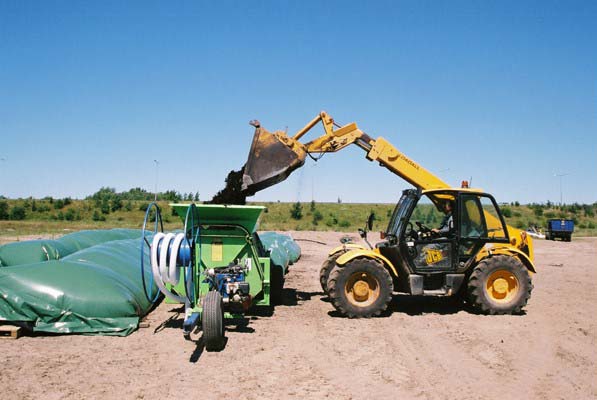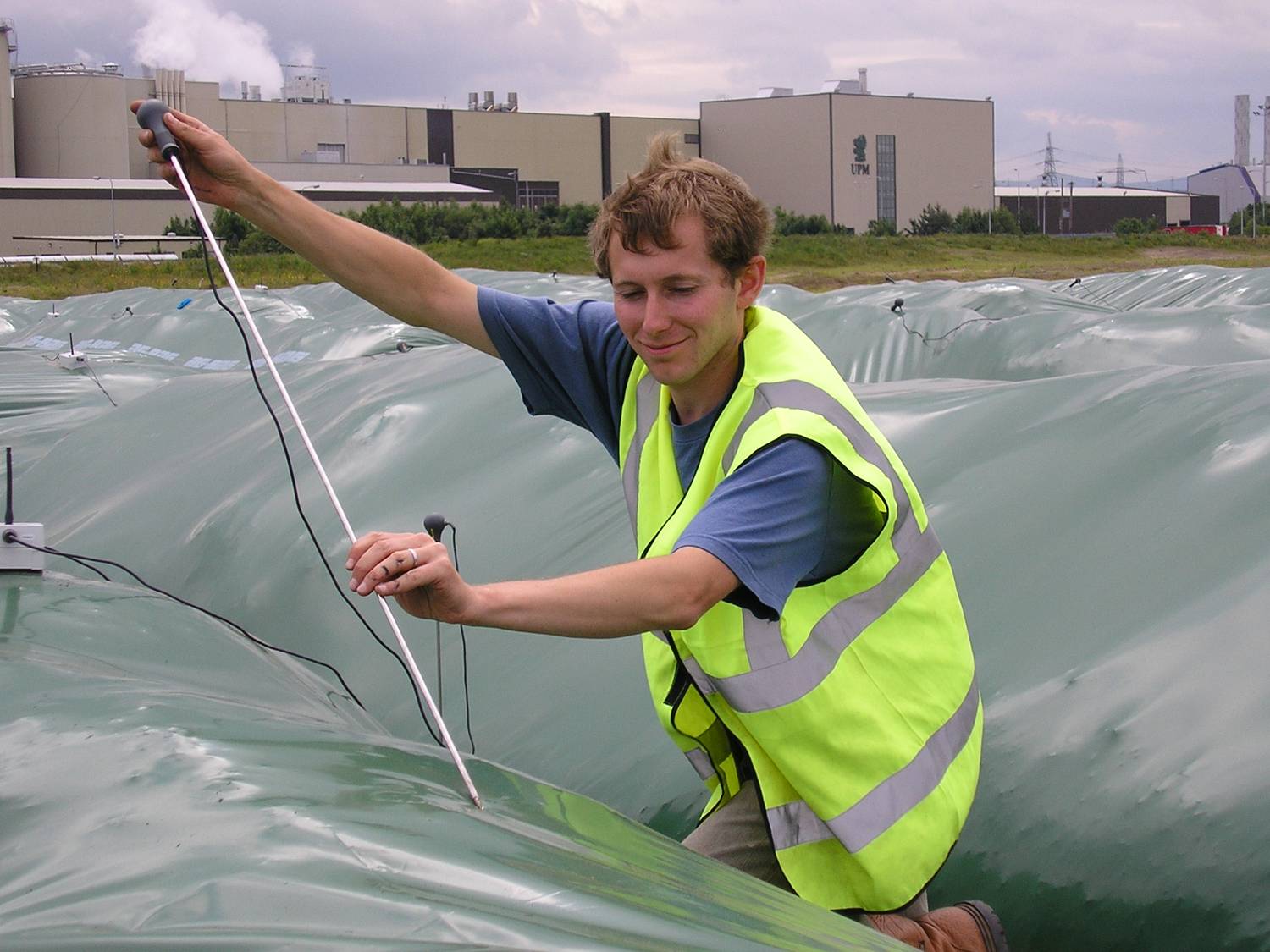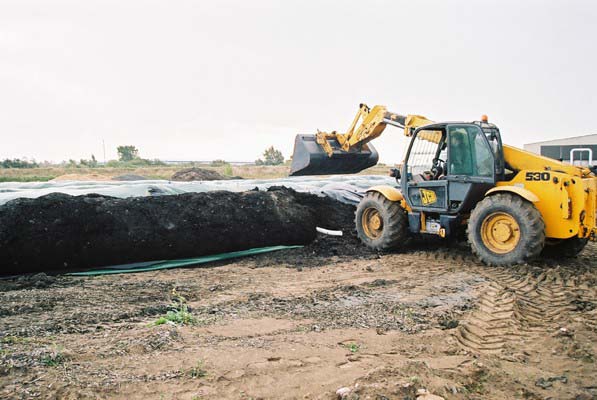- Home Page
- Composting
- Decomposition
Aims
Feedstock and Compost Mixes
Compost Production and Application - Land Restoration
- Quarry Sites
Urban Brownfield Sites
Mine Sites
Colliery Sites - Restoration results
- Quarry site - Blaenau Ffestiniog
Urban Brownfield site - Shotton
Mine site - Greece
Colliery site - Woolley Colliery - Dissemination and Publications
- Forthcoming Events
Previous Events
Open Days
TWIRLS Newsletters
Scientific Publications
Media Archive
Best Practice - Manuals and Tools - Information Services
- Best Practice - Manuals and Tools
- Our Staff

TWIRLS: Treating Waste for Restoring Land Sustainability
Compost Production and Application
Composting Menu
The EcoPOD system
We are using an enclosed vessel (EcoPOD) composting system (www.ag-bag.com for more details) to turn waste into compost. In-vessel composting has some advantages over traditional windrow composting, including a high degree of process control, little odour or bio-aerosol production; it is self contained with no waste/litter dispersal and little leachate production; it has a rapid cycle time, maximizing throughput on a smaller area; and is not dependent on external environmental conditions. In-vessel systems are more expensive to install and maintain than open windrows, but the containment makes them more suitable for co-composting contaminated soil from industrial sites. The EcoPOD system we are using has the added advantage of being portable, meaning that after obtaining proper regulatory approval, we can compost on-site instead of transporting soil using public highways.

Figure 4. EcoPOD enclosed vessel composters at our brownfield (former steelworks) site on the Dee estuary. Each pod is 60 m long and produces approximately 40 tonnes of usable compost from waste materials in 12 weeks.
In the EcoPOD system (Figure 4) recyclable HDPE bags are filled with shredded feedstock materials and each bag is aerated using fans connected to an aeration pipe running the length of each bag. The controlled aeration means that the composting stays aerobic (requiring oxygen) so that the biodegradable fraction of the feedstock materials is converted to carbon dioxide through the feeding activities of microorganisms. Lack of oxygen in landfill sites means that decomposition there is anaerobic and produces methane instead of carbon dioxide. This is important as the global warming potential of methane is more than 20 times that of carbon dioxide (1).
1) Mixing the wastes
The wastes for composting are delivered to the site already shredded and placed in temporary piles. We then use a telescopic handler or front loading digger to place the wastes in a cattle feed mixer wagon (Figure 5). The digital scales on the mixer wagon (and the skill of the drivers!) allow us to accurately weigh each waste and make different mixtures of feedstocks.
Figure 5. Mixing the wastes using a cattle feed mixer wagon.

2) Filling the EcoPODs
The mixed feedstock materials are then loaded into the EcoPOD filling machine (Figure 6). For our experiments we are using ten 60 m long bags at each of our trial sites. Each bag is 1.5 m wide and is filled with roughly 70 tonnes of feedstock. If necessary, water is added at this stage to make sure the compost doesn’t dry out.
Figure 6. Filling the EcoPOD composting vessels with feedstock materials

3) Monitoring the composting process
Composting takes 8-16 weeks depending on the quality of the feedstocks. During this time, routine measurements of temperature, pH and moisture content are made to see how well the mixtures of feedstock materials are performing. We also sample the compost to study the dynamics of carbon, nitrogen and phosphorus, and to follow that fate of any organic or heavy metal pollutants that may have been present in the feedstock materials. Routine microbiological analyses include checking for coliforms and salmonella that should be destroyed during the thermophillic phase of composting.
Figure 7. Inserting a Tinytag temperature probe with radio transmitter.

4) Opening the composting vessels
“Behold this compost!
Behold it well…! It grows such sweet things out of such corruptions….”
Walt Whitman
When composting is complete, the EcoPODs are opened (Figure 8) and the compost is again mixed using the cattle feed mixer wagon before being left to to mature in the open for one month. The mass of the feedstock materials will have decreased by between 30 and 50 % during composting as microorganisms convert the organic carbon to carbon dioxide, which is lost to the atmosphere.
Figure 8. Opening the EcoPODs, the plastic will be baled and recycled.


The finished product!
The finished compost is applied to the trial sites giving a depth of between 5 and 10 cm depending on requirements of the habitat being restored. The compost is allowed to settle for several weeks before the site is planted or seeded with native species, the growth of which will be monitored for at least 2 years.
References
1) United Nations, Framework Convention on Climate Change
(1996). Subsidiary Body for Scientific and Technological Advice, National
Communications. Geneva, Switzerland.

